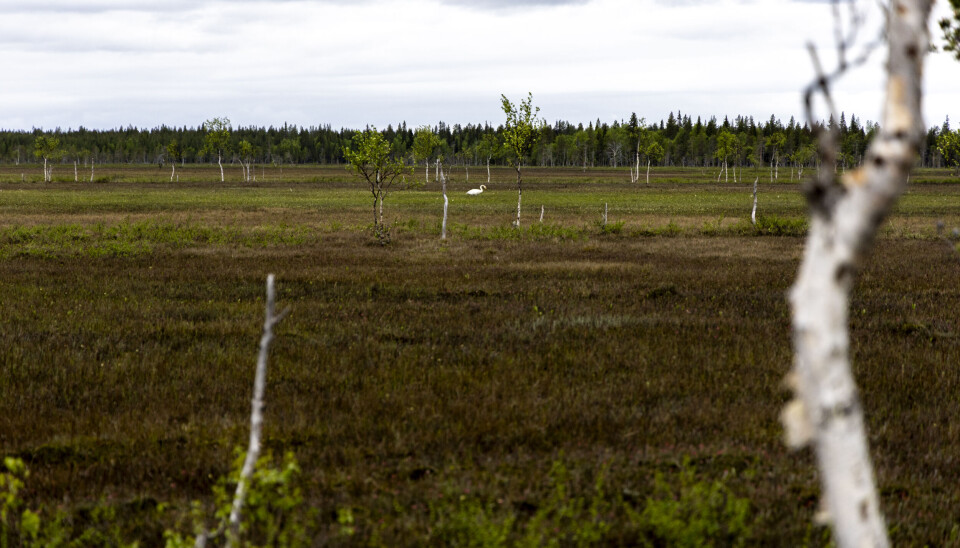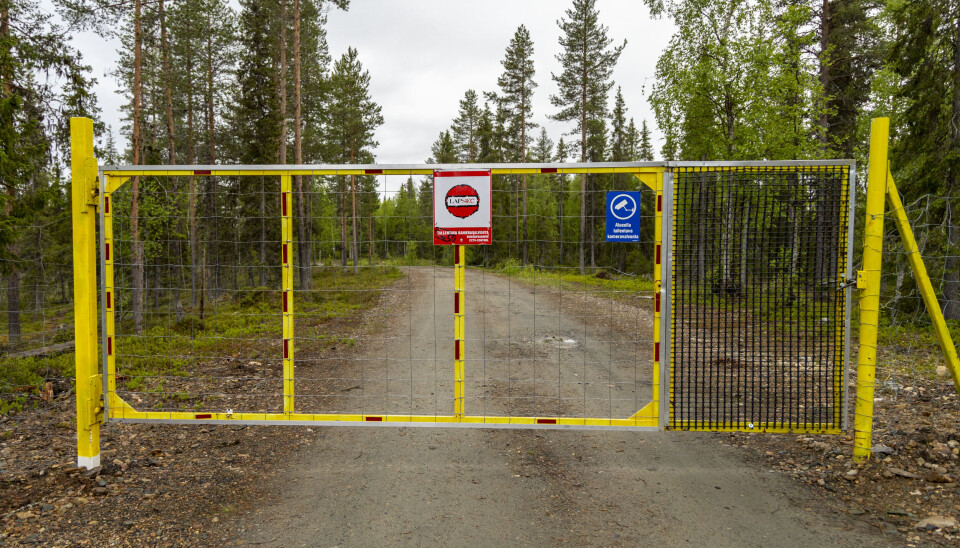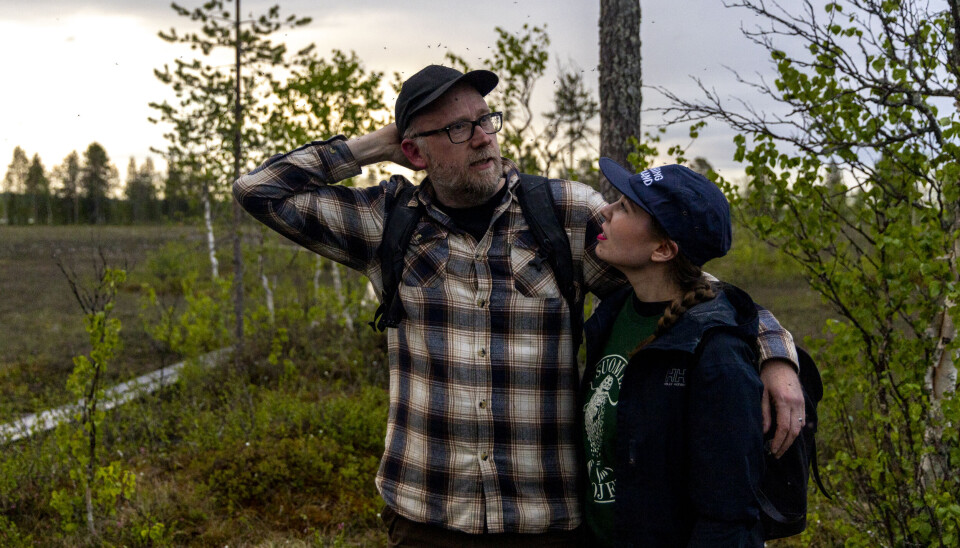
EU's hunt for strategic minerals risks undermine unique nature reserve
The controversial Sakatti mining project on a doubly protected mire will set a precedent for discarding environmental protections.
Viiankiaapa is a protected mire reserve. It is part of the EU’s Natura 2000 network of protected areas as well as the Finnish national mire conservation programme. It is also a site of interest for the mining industry. Anglo American subsidiary Sakatti Mining Oy has been test-drilling on a slice of the mire, while being blocked by activists. In 2025 it was chosen as one of 47 strategic projects under the EU’s Critical Raw Materials Act (CRMA), which gives them a streamlined permitting process among other benefits. The mine would mainly produce copper and nickel, strategic raw materials needed for the green transition and electrification of society, whose security of supply the EU wants to ensure. Additionally the orebody contains some cobalt and platinum group metals.
Sakatti Mining had promised The Barents Observer a tour of the site, but cancelled abruptly referring to their busy schedule. Right now the area is hauntingly empty. Signs on fences imply a forbidden area, but don’t actually deny entry. Only a small area of office containers is off limits. A whole courtyard of gear is abandoned at the site.
Ulla Syrjälä, Principal of Safety and Sustainable Development at Sakatti Mining, later comments on the company’s position.
She says that being chosen as a strategic project has clarified the permitting process, but she doesn’t believe it will speed it up significantly. “The processing time can’t exceed 27 months, which is well within what we’d usually expect on environmental permits in Finland.”


Sakatti Mining is currently waiting for its mining permit and working on the application for an environmental permit. These in turn require an exemption from the Natura 2000 protection, which the Finnish government is expected to deal with during the Fall of 2026. The decree on the protection of mires will also need to be changed, as it currently forbids damaging the bedrock.
The recently renewed mining law requires all new mines to have corresponding land use planning. First the Regional Council of Lapland includes it in a phased regional land use plan, after which the Sodankylä Municipal Council has to do the same for a local master plan or detail plan. Both of these are political bodies where the majority supports the mining project.
The juridical hurdle is in the terms of breaking away from the Natura program. It requires an overriding reason, which the company argues is in the significance of the deposit and its status as a strategic project for the EU. There should also be no possible alternative solutions.
“The goal of the EU is to increase resource security. The demand for these materials, in order to achieve self-sufficiency, is huge. Both now and in the future“ Syrjälä says.
Mikko Sipilä, Head of Värriö subarctic research station and professor at the Institute for Atmospheric and Earth System Research at the University of Helsinki, has challenged the company’s viewpoint. His calculations show that the mine would satisfy global demand for merely a couple of days.
“It’s an average sized deposit. Kevitsa [another mine in the Sodankylä area] is roughly the same size. Talvivaara [in Sotkamo and infamous for its environmental damage] has five times the amount of nickel than Sakatti,” Sipilä explains. He also questions the apparent lack of alternatives: “There is a lot of mineral exploration in the Sodankylä area and the CEO himself has anticipated that similar deposits will be found in addition to this one and Kevitsa.”
Syrjälä disagrees with this reading. “Alternativelessness means here that to make use of the deposit, we have to be able to show that there are no alternatives to accessing the resources, and that we have avoided, minimised and mitigated impacts as far as possible such that the project impacts the Natura values as little as possible.”
Mikko Sipilä sets his hope in the Supreme Administrative Court, where the case will eventually go in the appeals process when the political decisions are challenged.
The deviation from Natura will set a precedent for future cases. Many other companies wait eagerly for the ruling.
“The bar is very low here. It means essentially that in the future any mine will count as an overriding reason,” says Riikka Karppinen, long time Viiankiaapa conservationist, when she and her spouse Sipilä meet with The Barents Observer in Sodankylä.

What is unusual for the project and one of the reasons it is even considered in the first place is that the mine is planned to be underground. The concentration of the ore and other facilities needed for the mine would happen outside the conservation area and the mine would only be accessible via tunnel.
The mining area would initially only cover 3% of the mire, but the consequences won’t be limited to that. “In spite of any precautionary measures, it is a fact that the groundwater level will sink, which will risk us losing many of the species and biotopes that are the reason for the conservation of the mire,” Karppinen says. There is also a fear of later expansion. The company has applied for prospecting rights for most of the conservation area.
Karppinen is especially frustrated by the shallow public discourse. She says that statements from proponing politicians reveal that they aren’t familiar with the case.
“I would hope that they’d face the facts and stop pretending that the mine is environmentally friendly, when the company itself says that damage will be done.”
She finishes on a more philosophical note: “What is the point of protecting areas if they are this expendable? If it’s just temporary until someone figures out a better use for the area, it undermines the whole idea of conservation.”
Ulla Syrjälä says that she understands the worry, but assures that getting an exemption is in no way easy. “The company has been in Finland for more than 20 years and during that time we have done substantial research on the project, thought about permits and planned how it can be done with the least possible impact on Natura.”
Maija Lassila, post doc researcher at Helsinki Institute of Sustainability Science at the University of Helsinki, has also followed the case closely. She approaches the subject from an environmental justice perspective and is, in addition to environmental risks, especially worried about the social consequences if the mine is greenlit.
“Sodankylä is part of the state’s Special Reindeer Herding Area, where reindeer husbandry is protected as a traditional livelihood and should be taken into account in this project.” Lassila says.
She also emphasizes the combined and cumulative effects on the area, both on the environment and social.
“These projects don’t happen in a vacuum but on a continuum of historical and colonial activity in the area,” Lassila says. The river Kitinen was harnessed to hydropower, which put an end to fishing. The filling of the reservoirs of Lokka and Porttipahta drowned many villages and hundreds of people, many of them reindeer herders, had to move.
“In the post war period locals had to suffer for national interests. Now it’s in the name of global green transition,” Lassila says.






















